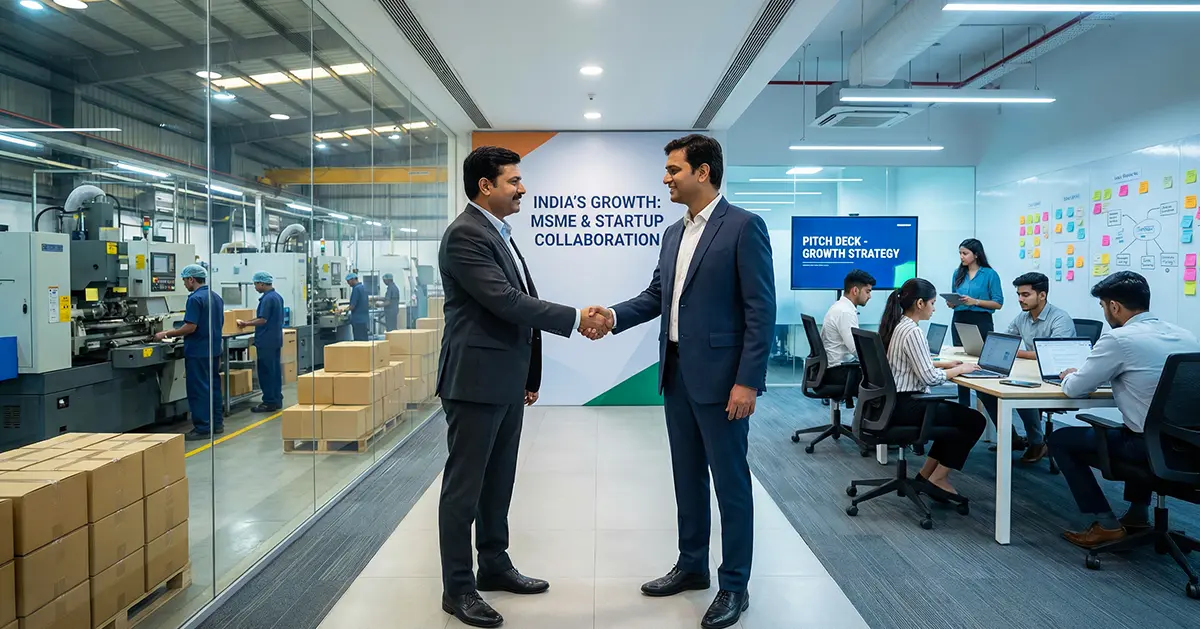
Introduction
In the fast-paced and ever-evolving world of e-commerce, reducing RTO (Return to Origin) is one of the most crucial challenges for businesses aiming to maximize profitability. RTO, which occurs when a product ordered by a customer is returned to the seller rather than being delivered successfully, leads to significant financial losses and disruptions in order fulfillment processes. The reasons for high RTO rates vary, including incorrect addresses, customer refusals, and delivery failures. When these issues are frequent, businesses face escalated logistics and operational costs, affecting the bottom line and overall customer satisfaction.
Effective e-commerce logistics plays a key role in minimizing RTO and optimizing the supply chain. By improving address verification processes, enhancing customer experience, and streamlining delivery methods, businesses can reduce RTO and boost profitability. In this article, we will delve into how to reduce RTO in e-commerce, explore its impact on business operations, and discuss the best strategies for improving order fulfillment, logistics, and customer satisfaction.
Read blog: Step-by-Step Guide to Launch Your Online Retail Business
What is RTO (Return to Origin) in E-Commerce?
RTO in e-commerce refers to the situation when a delivered product is returned to the seller’s warehouse, rather than reaching the customer. This typically occurs when customers either refuse to accept the order, provide incorrect address details, or fail to make the payment for Cash on Delivery (COD) orders. RTO reduction is important because it directly affects order fulfillment efficiency, increases e-commerce logistics costs, and leads to lost sales.
Common Causes of High RTO in E-Commerce
Understanding the causes of high RTO rates is essential to take the right steps toward reducing RTO and optimizing overall business performance:
- Incorrect Customer Addresses: Inaccurate address details entered during the checkout process can cause delivery failures, leading to RTO.
- COD (Cash on Delivery) Failures: Customers may refuse to pay or lack the necessary cash when COD is the chosen payment method, leading to an increased RTO rate.
- Order Rejections: Delayed deliveries, poor-quality products, or lack of communication about delivery timelines often result in customers rejecting deliveries.
- Buyer’s Remorse: Customers may change their minds post-purchase, leading to return to origin due to reasons such as discovering better deals elsewhere.
- Inefficient Logistics Management: Delays, poor route planning, or inefficient courier systems can contribute to failed deliveries, which increase RTO.
- Mismatch in Product Expectations: If the product does not meet the customer’s expectations or the online description, it is more likely to be rejected and returned.
Effective Strategies to Reduce RTO
Now that we understand what RTO is and why it occurs, let’s look at some actionable strategies to reduce RTO in e-commerce:
1. Accurate Address Verification
Address verification is one of the most effective methods to reduce RTO in e-commerce logistics. Use automated address validation tools during the checkout process to confirm that the entered address is accurate and deliverable. For example, integrating address standardization technology can help identify mistakes before they become problems.
Example:
Platforms like Loqate and SmartyStreets offer address verification solutions that automatically correct errors and standardize the format of addresses, reducing the chance of failed deliveries.
2. Optimize COD Policies
Cash on Delivery (COD) orders are more prone to RTO due to customer reluctance to pay at the time of delivery. To minimize this, businesses can:
- Introduce partial COD: This ensures customers pay part of the order amount upfront, reducing the chances of refusal at delivery.
- Offer incentives for prepaid orders: Encourage customers to prepay by offering discounts or promotional offers on prepaid purchases.
Example:
Amazon and Flipkart have successfully reduced RTO rates by offering discounts for customers who opt for prepaid payment methods, resulting in more successful deliveries and lower return rates.
3. Improve Customer Experience
A positive customer experience is essential in reducing RTO rates. By enhancing product descriptions, ensuring accurate images, and improving communication throughout the purchase and delivery stages, customers are less likely to reject their orders.
- Provide clear product details: Accurate descriptions and high-quality images will ensure customers know exactly what they are ordering, reducing dissatisfaction upon delivery.
- Communicate delivery timelines: Keep customers informed with real-time updates about their order status, expected delivery time, and tracking information.
Example:
Zappos, an online footwear retailer, places emphasis on clear product images and customer-centric policies, resulting in higher customer satisfaction and fewer returns.
4. Streamline Order Fulfillment Processes
Efficient order fulfillment is key to reducing RTO. To ensure smoother deliveries:
- Automate fulfillment processes: Implement technologies to minimize errors in order packing and dispatch.
- Partner with reliable logistics providers: Work with dependable courier services that offer reliable and timely deliveries.
Example:
Companies like ShipBob and ShipStation provide fulfillment services with integrations to streamline order processing, ensuring quicker dispatch and reducing delivery failures.
5. Implement a Robust Return Policy
Offering a transparent return policy encourages customers to accept deliveries even if they are unsure about keeping the item. By allowing customers to return items easily, they may be more inclined to accept the product instead of refusing delivery outright.
- Highlight return policies: Make sure return conditions are clearly communicated during checkout.
- Offer easy return processes: Simplify the return process to prevent customers from rejecting deliveries for the fear of a complex return procedure.
Example:
Zara and ASOS have easy return policies that make customers feel more comfortable accepting deliveries, even if they might return the product later.
6. Offer Real-Time Tracking and Notifications
Providing real-time tracking and notifications can significantly reduce RTO rates by keeping customers updated about their delivery status. This can help in reducing delivery failures by ensuring the customer is prepared for the delivery.
- Send timely SMS or email notifications: Inform customers about order progress, delivery time, and any delivery attempts made.
- Provide tracking links: Allow customers to track their orders at any time for better transparency.
Example:
Domino’s Pizza utilizes real-time tracking to let customers track the delivery status of their pizza, ensuring a smooth delivery experience.
7. Analyze and Segment High-Risk Orders
Analyzing customer behavior and order data can help identify high-risk orders that are more likely to result in RTO. By analyzing past data, businesses can segment high-risk customers and take preventive actions.
- Implement predictive analytics: Use historical data to identify orders that are at a higher risk of return.
- Segment customers based on RTO history: Create a tier system to identify and manage high-risk customers separately.
Example:
eBay uses predictive analytics to reduce high-risk orders, flagging customers with a history of returns and requiring additional steps before shipping.
8. Encourage Prepaid Orders
Prepaid orders have lower RTO rates compared to COD orders. By encouraging customers to opt for prepaid orders, businesses can ensure a smoother transaction and minimize delivery rejections.
- Offer payment options: Provide secure and multiple payment gateways for customer convenience.
- Incentivize prepaid purchases: Offer discounts or loyalty points for customers who choose to prepay their orders.
Example:
Many online stores, including Myntra, offer cashback and discounts on prepaid purchases, effectively reducing RTO rates.
The Role of Technology in Managing RTO in e-commerce
Technology plays a vital role in reducing RTO in e-commerce logistics. Here are some essential tools and systems that can help:
1. Automated Address Verification Tools
Automated address verification tools ensure that customer addresses are validated at the point of entry, minimizing the chances of failed deliveries.
2. Predictive Analytics for High-Risk Orders
Using predictive analytics, businesses can assess the likelihood of RTO for each order based on customer behavior and historical trends, allowing for more accurate decision-making.
3. Real-Time Order Tracking Systems
Real-time tracking systems allow both customers and sellers to track the order progress, reducing uncertainty and increasing the likelihood of successful deliveries.
4. Inventory Management Software
Efficient inventory management helps businesses manage returns and RTO reduction by streamlining the restocking process and reducing losses.
Impact of Reduced RTO on Profitability
Reducing RTO in e-commerce not only streamlines operations but also has a significant positive impact on profitability:
1. Lower Operational Costs
Reduced RTO leads to lower costs associated with reverse logistics, warehousing, and restocking returned products.
2. Improved Cash Flow
With fewer returns, businesses can maintain a healthier cash flow, especially with COD orders, where returns can delay payment cycles.
3. Enhanced Customer Satisfaction
A smoother order fulfillment process with fewer delivery failures boosts customer satisfaction and fosters brand loyalty.
4. Increased Profit Margins
By reducing the costs related to returns and improving order completion rates, businesses can increase their profit margins.
5. Strengthened Brand Reputation
A consistent delivery process and reduced RTO rates lead to improved brand reputation and better customer retention.
Conclusion
Reducing RTO in e-commerce is critical for improving logistics efficiency, customer satisfaction, and overall profitability. Implementing strategies such as accurate address verification, optimizing COD policies, enhancing customer experiences, and leveraging technology can significantly lower RTO rates and streamline order fulfillment. By focusing on these strategies, e-commerce businesses can enhance their operational efficiency, boost their profitability, and build a strong, reputable brand.
At RegisterKaro, we specialize in offering expert solutions for e-commerce logistics, helping you manage order fulfillment, reduce RTO rates, and optimize business processes. Contact us today to take your rto in e-commerce business to the next level!




